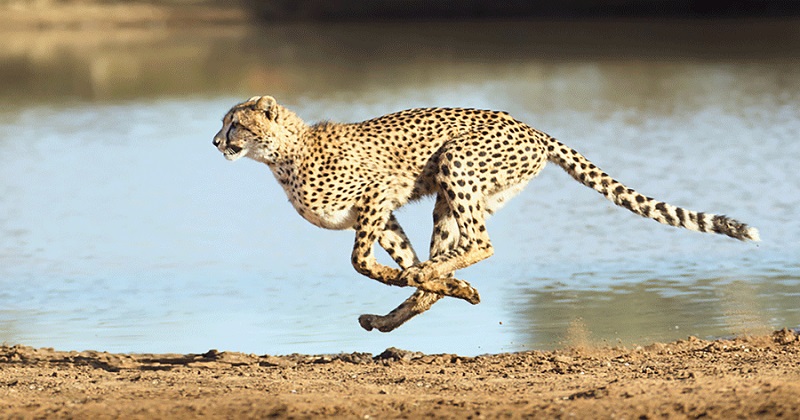
India has signed an MoU with Namibia and South Africa to transport the cheetahs. The animals will first be in quarantine and eventually be released into the 750 sq kilometre forest. The cheetah is set to set its paws on the Indian soil nearly 70 years after its native population went extinct in the country.
Cheetahs were wiped out by 1952 in India due to a combination of factors – hunting, habitat loss and food scarcity. 70 years later, with the safeguards of the Wildlife Protection Act 1972, India should be a more hospitable place for the cheetah. Eight cheetahs will arrive from Namibia in August at the Kuno National Park in Madhya Pradesh’s Sheopur district.
The national park in north-western Madhya Pradesh ‘was identified as the cheetahs’ final home because the area was already being prepared for the reintroduction of the Asiatic lions from Gujarat. If the lions from Gir are also eventually translocated to KNP, as per the Supreme Court orders, it would become the only place in India to house four big wild predators in the country – tiger, lion, cheetah and leopard.
The plans to introduce the cheetah to Kuno have eclipsed the plans to give lions a new home in MP. But the arrangements made for lions have made Kuno the ideal home for cheetahs coming all the way from Africa, as per wildlife biologists. Dr. Yadvendradev Jhala, Dean, Wildlife Institute of India, Dehradun.
The ‘king’ will have to wait. For now
Kuno’s proposal as a potential second home for lions prompted relocation and rehabilitation of several villages. A prey base for the animal was also built over time. Large tracks of cultivated land were returned to the forest. Cheetahs – that once inhabited vast spans of land from Punjab to Tamil Nadu and Gujarat to West Bengal during the British period and afterwards – usually range in arid, semi-arid open habitats. Kuno is certainly suited to its new guests. But the cheetahs are not temporary visitors here. Can they survive in their ‘truly wild’ nature in the forests of Chambal?
The perfect home
The Indian government plans to introduce eight to ten cheetahs every year and in five years, they hope to have a population of 50. The animals will first be quarantined, checked for diseases, vaccinated before being released into the wild. But this process involves proper handling and requires trained professionals to ensure that the animals are prepped for the wild and don’t form a dependency on their human handlers.
Sharing the space
As is often the case, the new arrivals from Africa will share their habitat in Kuno with humans, at least on the outskirts of their territory. The government has stated in various media interactions that it will launch extensive awareness campaigns among local communities in order to make them stakeholders in the project.
Sharing the space
The government has said that it will launch extensive awareness campaigns among the local communities to make them stakeholders in the project. The cheetah’s integration will also depend on local participation and it is important to grant them their forest rights as per FRA. To survive in the wild, the cheetahs will need to hunt animals that they are not exactly used to in their native habitat.
The competition for meat
It is natural for large carnivores to compete for prey, but it is also true that animals have devised ways to avoid conflict. Kuno already hosts leopards, transient tigers from Rajasthan, dholes, Indian wolves and golden jackals. What else is needed is a robust and comprehensive monitoring plan. It is important to also monitor the social, economic and cultural aspects of the project as well as its impact on the environment.

Post Your Comments